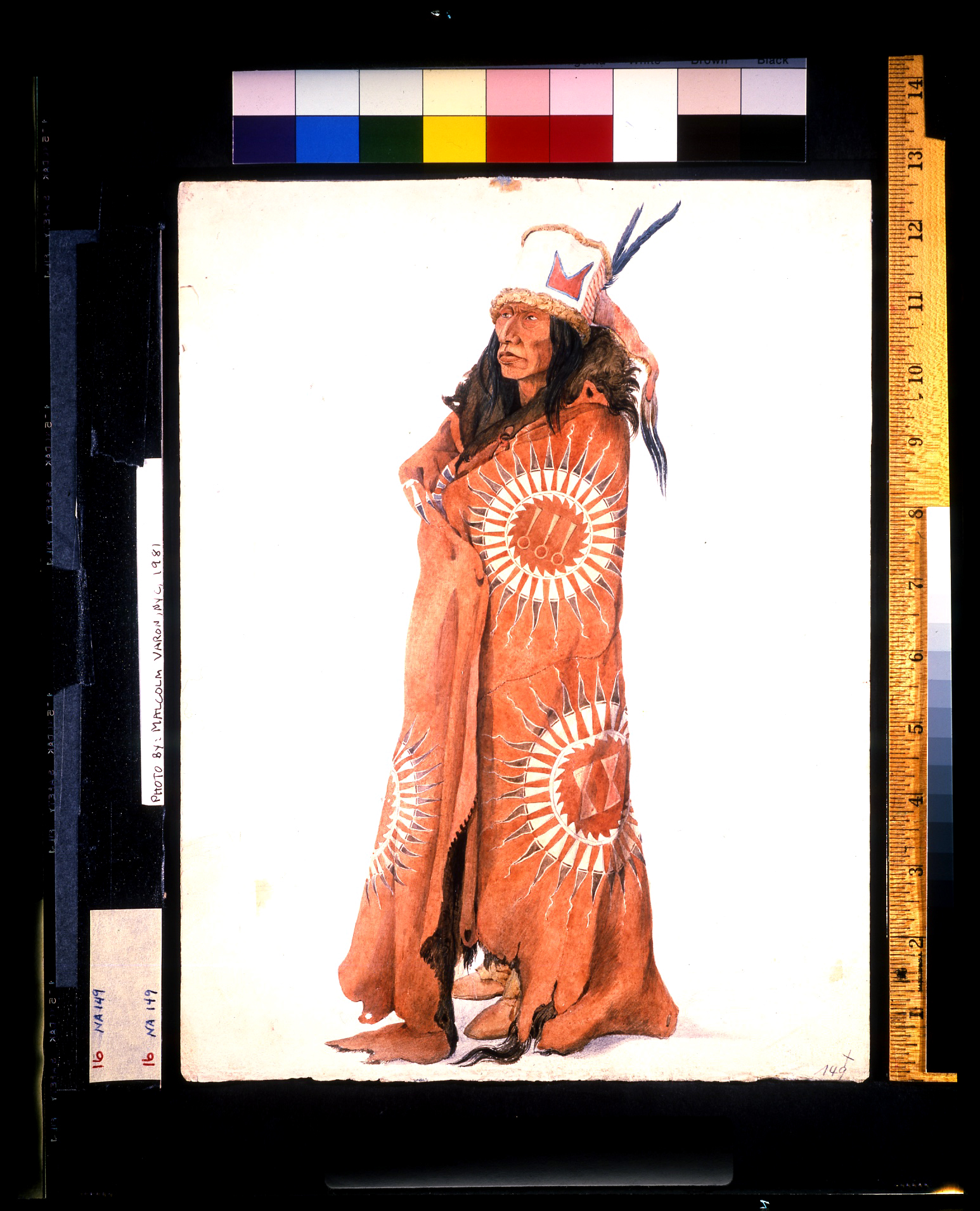Biróhkä, Hidatsa Man

Description
Two different translations are given for the name Biróhkä. In the diaries it is stated to mean "The Robe With the Beautiful Hair," while an inscription on the reverse of the painting refers in French to "He Who Veers From the Side." The Mandans also had a nickname for this man: Pahchub-Hashka, "Big Nose." The painted cap Biróhkä wears is made of the hide of the highly prized white buffalo. It indicates that he was a man of substance, as does his beautifully painted robe. The feathered circle pattern was a popular one in the nineteenth century, favored especially by the Sioux and neighboring tribes. Maximilian described the design as a sunlike image, but noted that to the Indians it represented the feathered bonnet of the accomplished warrior. Feathered circle robes are still commonly referred to as "men's robes," a term obviously stemming from the old association with battle honors. Clad in this robe Biróhkä appears as one of the spectators at the scalp dance depicted in Tableau 27 of the aquatint atlas.
Medium
watercolor and pencil on paper
Dimensions
12 5/8 x 9 5/8
Call No.
JAM.1986.49.291
Approximate Date of Creation
1st March 1834


